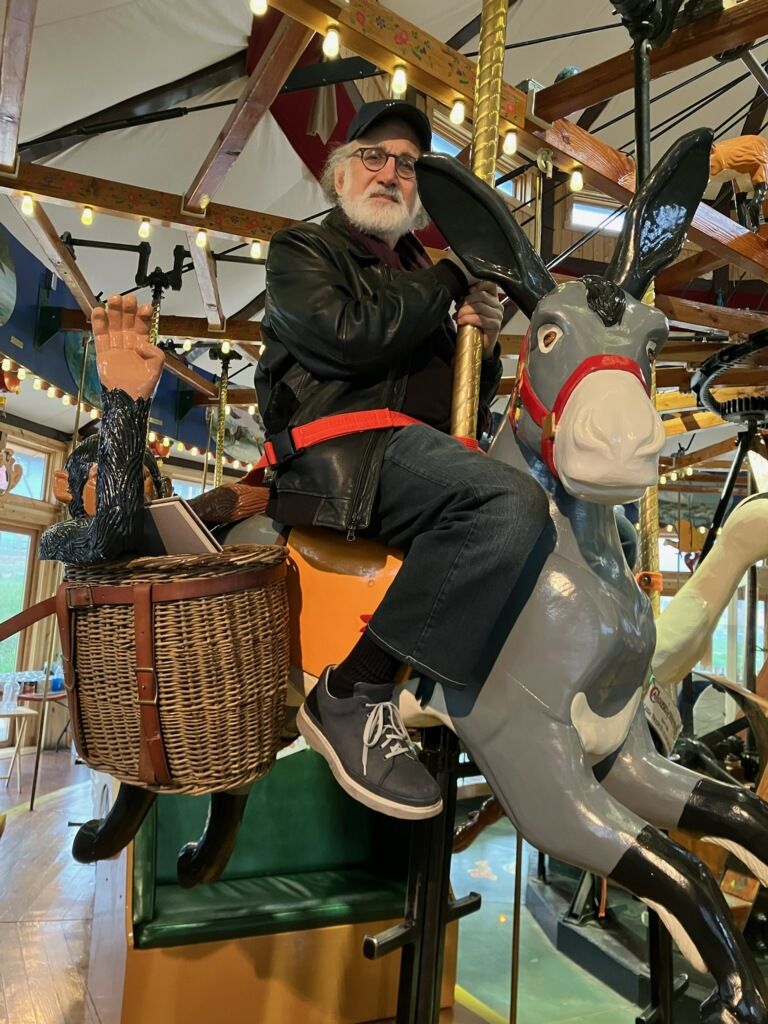Thirty-six years ago, the conductor Robert Olson, a faculty member at Boulder’s University of Colorado, created Colorado Mahlerfest for hungry Mahlerites. In 1987, performances of Mahler symphonies were far less common, far less pervasive than today. The first Mahlerfest comprised the First Symphony, an early movement for piano quartet, and a set of songs.
Mahlerfest XXXVI, which concluded last Sunday afternoon, included three orchestral concerts, two chamber music concerts, and a film. As the author The Marriage: The Mahlers in New York, I took part in an all-day symposium. The entire festival experience was impressive.
Mahler’s is not living-room music. He composed big pieces for a community of listeners. It was the communal aspect of Boulder’s Mahlerfest that surprised me most..
The centerpiece of the festival was a performance of the Resurrection Symphony, which lasts ninety minutes and requires a large orchestra, offstage brass and percussion, two vocal soloists, and a big chorus. The audience at Macky Hall, on the University of Colorado campus, numbered about a thousand. Completed in 1922, the hall is picturesque, with tall cathedral windows. The rapt audience was remarkably inter-generational – something not to be found in New York City concert halls these days, and crucial to the ambience of shared experience.
As unusual is that the orchestra of 100-plus players felt part of it all. They arrived to play Mahler from all over the United States. Only the principal players were paid. The others came as a labor of love.
The conductor was Kenneth Woods, in charge since Olson’s departure in 2015. A gifted speaker and thinker, he is a pervasive presence. He is not addressed as “maestro” – the presiding maestro being Gustav Mahler.
Woods’ performance of Mahler 2 left no doubt that he is a major Mahler interpreter. I have heard cleaner performance of this work, but never one more convincing. The symphony suffered a long and tortuous gestation lasting some six years. The first movement is a funeral march, the second a Landler of sorts, the third a kaleidoscopic scherzo. After that, the piece goes its own way, with agonized words by Klopstock and Mahler, an opening of graves, a march of the dead, and a final paean of transcendence.
This blazing sequence risks shattering under pressure into disconnected shards of brilliance. The opening march movement alone, some twenty minutes long, combines grief and fury with soaring intimations of serenity. Mahler asks that the fundamental speed change more than two dozen times. Woods’ reading here embraced an exceptional range of mood and tempo. But a mighty Ur-pulse was sustained. The movement ends with a wasted tread, then a torrential scalar descent, then two pizzicato chords. Reading a sharply accented staccato triplet, Woods’ violas (an exceptional group) more than honored the score; they enacted the dirge’s culminating fatigue. The play of tempo in these closing measures was so keenly gauged that the silences told loudly and precisely. And so it was in the subsequent movements, with their many critical pauses; the trajectory remained organic. Midway through the pivotal mezzo-soprano solo – right at “the loving God will grant me light” — the Boulder sun emerged, streaming through the high cathedral windows. An uncanny moment.
Woods was also responsible for the artistic heft of the festival’s five packed days. The Resurrection Symphony was preceded by an ambitious symphonic work by Thea Musgrave: Phoenix Rising (1997). A Mahler “Liederaband,” recreating Mahler’s Vienna concert of January 29, 1905, comprised sixteen songs with orchestra: Kindertotenlieder, Ruckert-Lieder, and selections from Des Knaben Wunderhorn. A chamber orchestra program comprised the American premiere of Hans Gal’s Fourth Symphony (1974) and act one of Wagner’s Die Walkure (with reduced forces). Two chamber music concerts included a terrific rendition of Korngold’s String Sextet (Op. 10), Ernest Bloch’s Suite for Cello and Piano (a transcription of his viola suite), and shorter works by Max Reger, Erwin Schulhoff, Egon Wellesz, Olivier Messiaen, and Luciano Berio.
Next May, Mahlerfest XXXVII will explore the relationship between Mahler and Richard Strauss. The orchestral fare will include Mahler’s Fourth and Strauss’s Alpine Symphony. I’ll be there.
The 2023 Mahlerfest Symposium may be accessed here. My presentation begins one hour and 48 minutes into the link and includes commentary by Thomas Hampson. I deal with (1) Mahler’s New York performances and what they sounded like, and (2) why Henry Krehbiel regarded Mahler’s New York Philharmonic tenure a “failure” (and how I turn their relationship into historical fiction).


Leave a Reply